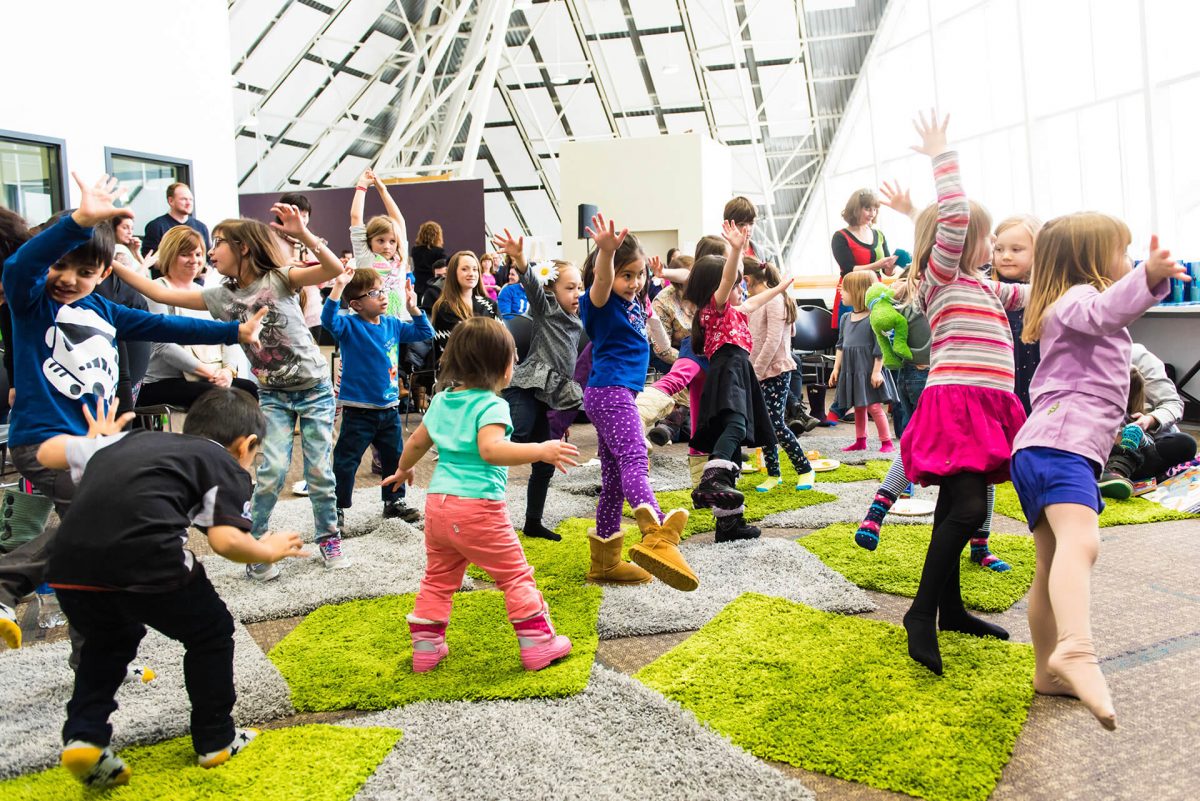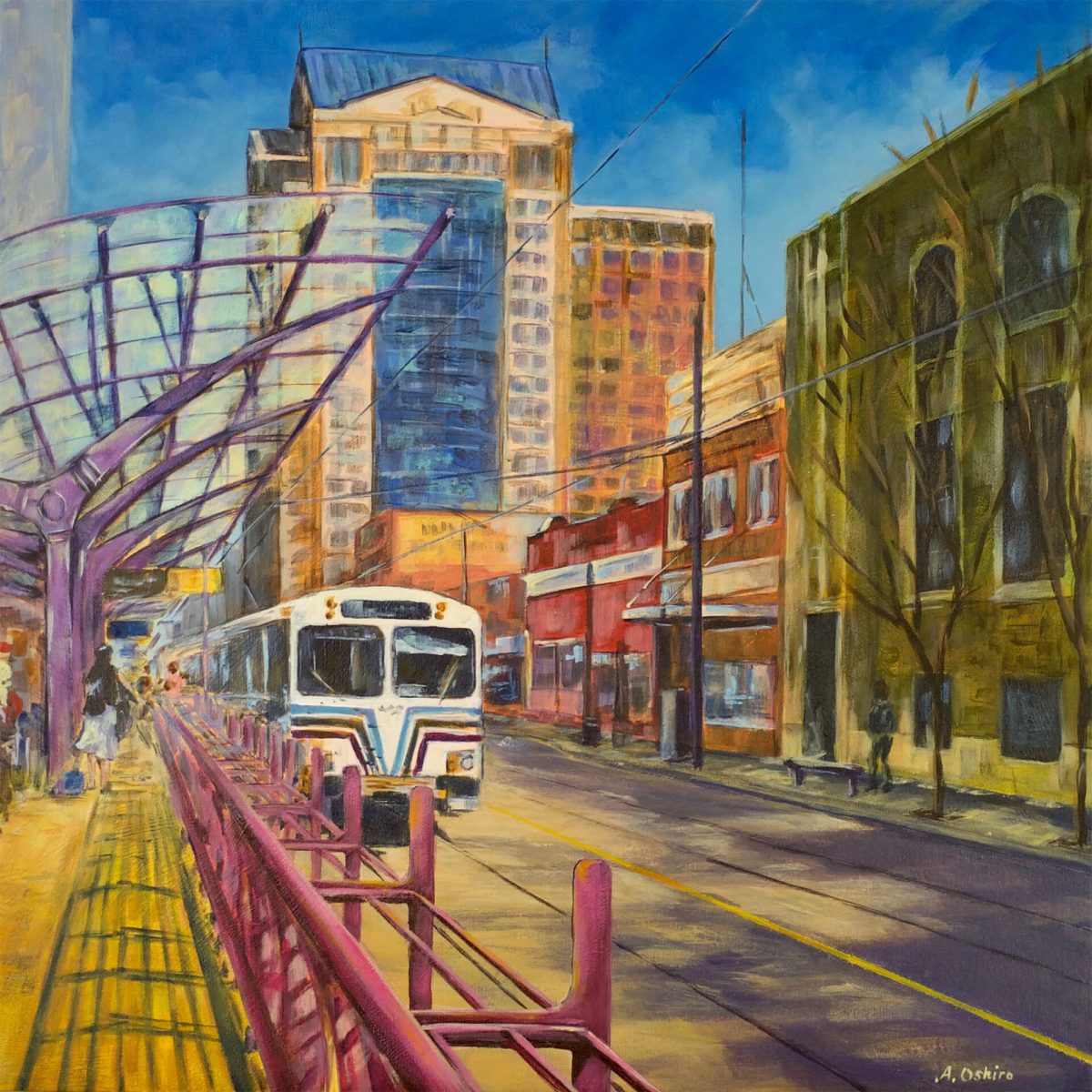‘CEREMONIES LIKE THIS WERE NOT ALLOWED’
Jared Tailfeathers shares his naming ceremony with the Library community
On a warm Monday morning in early June 2019, colourful song and dance filled Central Library’s Patricia A. Whalen Performance Hall as Jared Tailfeathers was gifted a new name.
To an audience of community members, Jared’s family, colleagues, and the public, Elder Clarence Wolfleg led a naming ceremony in the Patricia A. Whelan Performance Hall. Following a smudge, the Elder put his hand on Jared’s head and told the story of Jared’s new name, first in Blackfoot, then English. For the first time, Jared heard his new name.
“My name is Sikomh Komii, which means Calling Crane,” says Jared, Program Coordinator for Indigenous Placemaking at Calgary Public Library.
In Blackfoot culture, a name is given when a person has done something worthy of note, or they also can get a name from an ancestor or relative who has passed on. A person can earn different names throughout their life, based on their accomplishments, spiritual transfers, and family history. Traditionally, Blackfoot people went by their one given name; the convention of first names and family names came from settlers.
For Jared, who works as a facilitator, artist, and community connector, his first Blackfoot name reflects his extensive work in Indigenous arts and culture.
“Your name is a way of telling you who you are, and telling other people who you are. It means you did something,” Jared says. “Or an Elder sees something powerful in that name and it connects with you.”
“It’s a gift, and it’s supposed to represent gifts and strengths that I have and can share. It’s a powerful name that I have to do justice for, and so it’s a very important thing for me.”
When Jared learned that Elder Clarence Wolfleg had a name for him, Jared felt it was important to share his naming ceremony with the public.
“I’m half Indigenous, so half my family is always asking questions,” says Jared, whose late father was a member of the Blood Tribe, and whose mother has English and Scottish heritage. Jared grew up in Calgary, making regular visits to see his dad’s family on the Kainai Nation in southern Alberta.
“I thought this was a good opportunity for me to participate in my traditions and help other people be educated and show them what a fairly standard ceremony for Indigenous people is like,” Jared says.
In addition to educating others, Jared wanted to hold a public ceremony because for so many years, Indigenous people could not share their culture.
“People need to remember that ceremonies like this were not allowed, they were outlawed, even less than 100 years ago,” Jared says.
At the ceremony, Elder Clarence — whose own name is Miiksika’am, which means Red Crane — told the story behind Jared’s new name. Years ago, there was a camp of the Niitsitapi people, where Elder Clarence and other people were in ceremony for days, transferring knowledge and skills to the next generation.
When it came time for the transfer of the last bundle, the people looked east and saw four cranes circling silently above. As the cranes spread out, one came down from the sky and called four times, and then the four cranes went in four directions. The last one gave a loud call as he came close.
The people asked, “What does this mean?” Elder Clarence said it was important like a blessing, that the cranes were giving their consent that the transfer was good. Elder Clarence thought it was fitting to answer the blessing of the crane that came on that day, and to call Jared Sikomh Komii, meaning Calling Crane.
Jared’s naming ceremony was held on June 3, as part of Calgary Public Library’s kickoff event for Indigenous History Month.
“The Library has taken great steps in the last few years to really follow through with truth and reconciliation and education,” Jared says. “This was a special event for me personally, but it also meant a lot to be able to share it inside this lodge of education.”
For Jared, who remembers feeling excited but nervous, the naming ceremony was a powerful way of showing him who he is.
“Like most Indigenous people, I’ve felt sort of an identity crisis, especially being mixed, growing up feeling not white enough but not red enough,” he says.
His new Blackfoot name is a step on an ongoing personal journey, of connecting with Blackfoot culture through language, arts, events, family, and community members.
Jared hopes that other people embark on their own journeys, listening and learning from each other. He’s proud Calgary Public Library offers opportunities for everybody to do so, through Indigenous Placemaking, the Elders’ Guidance Circle, and new programs.
“I hope that both Indigenous and non-Indigenous people feel comfortable enough to talk to each other about things and to continue to ask questions of each other, hard questions and easy questions alike,” Jared says.
“I encourage people to learn, to use the Library for what it’s supposed to be used for. You should learn about all of your neighbours. There’s so many people here, so many cultures and backgrounds, and there’s more similarities than differences.”



